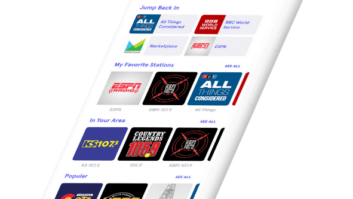
Proponents are pleased with initial results of the industry’s advertising campaign to create consumer awareness around the NextRadio app and FreeRadioOnMyPhone.org. They say daily downloads of the app have gone up by more than 50% since the campaign launched Feb. 23.
The point of the ads being aired by stations involved in the NextRadio project is to inform consumers that FM combined with the Internet on their phone is a visually engaging and interactive experience. Proponents want consumers to download the NextRadio app on their smartphones, or go to FreeRadioOnMyPhone.org and ask their carriers to activate the FM chips on their devices.
Thirty-five Sprint models come preloaded with the NextRadio app and Emmis has been talking with other carriers about activating FM on their models as well. The other carriers, and Sprint, of course, want to see the radio industry promote FM in the smartphone and see how consumers respond.
“Tens of thousands of consumers,” some 411,261, have told their wireless carriers they want the FM chip activated in their smartphones, according to NextRadio/TagStation President Paul Brenner. “As we meet with carriers, they keep telling us they are glad to see the radio industry promoting itself and demonstrating our own influence through mass media.”
Radio stations across the U.S. were given preproduced spots that aired approximately 20 times a week per station. Now, owners are being asked to continue to run the commercials and are being provided fresh spots based on station feedback.
According to initial results, more than 256,000 new users have downloaded and used the NextRadio app since the ad campaign began, and consumers listen and/or interact with the device through the app for an average of 17 minutes per session.
NAB, too, is pleased with the initial results. NAB President/CEO Gordon Smith describes the ad campaign as “the fruition of leaders in the radio business working together to provide listeners with an exciting new broadcast radio experience that is dependable in times of emergency and providers the interactivity listeners seek.”










